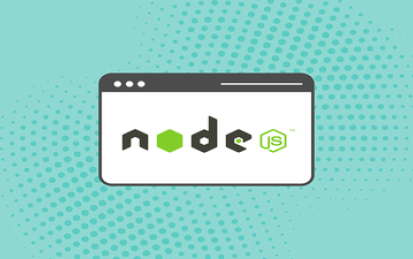

Our Courses

Cloud Application Development Foundations
This program will equip you with all the key skills and technical know-how to kickstart your career as a full-stack Cloud Native Developer.
-
Course by

-
 Self Paced
Self Paced
-
 English
English

Building Modern .NET Applications on AWS
In modern cloud native application development, it’s oftentimes the goal to build out serverless architectures that are scalable, are highly available, and are fully managed. This means less operational overhead for you and your business, and more focusing on the applications and business specific projects that differentiate you in your marketplace. In this course, we will be covering how to build a modern, greenfield serverless backend on AWS.
-
Course by

-
 Self Paced
Self Paced
-
 16 hours
16 hours
-
 English
English

Developing Cloud Native Applications
Do you want to learn about developing applications that are cloud native right from conception to implementation? In this course, you’ll begin with some crucial cloud concepts such as Cloud Native Applications, CNCF and Hybrid Cloud. You will dive into specific tools and techniques for developing cloud native apps. You’ll then learn how to use CLI to develop, test and deploy applications for IBM Cloud with the use of Node.js . You will further use DevOps to maintain application development using Web IDE features, Git repository and Delivery Pipeline.
-
Course by

-
 Self Paced
Self Paced
-
 18 hours
18 hours
-
 English
English

JavaScript Security Refreshers
This course is a Secure Javascript Programming Overview. It gives the student an introduction to JavaScript security and covers important topics like authentication best practices and refreshers on JavaScript, Web browsers and Node.js.
-
Course by

-
 Self Paced
Self Paced
-
 3 hours
3 hours
-
 English
English

Server side JavaScript with Node.js
Have you ever wondered how you are able to do net banking or book a ticket online? Which technology is adopted for applications used in different businesses? Backend technology acts as a backbone to every web application. It typically includes all services, data interfaces and their core business logic. This course will introduce you to the Node.js environment and help you design and develop backend or server-side of the application. It also provides you with hands on coding exercises and will enable you to build JavaScript programs and test and execute them in the Node.js environment.
-
Course by

-
 Self Paced
Self Paced
-
 32 hours
32 hours
-
 English
English

Build a CRUD Node.js and MongoDB employee management web-app
In this project, you’ll help the team at Apollonia Dental Practice digitalize employee management by building a web app using HTML, CSS, JavaScript, ExpressJS, NodeJS, and MongoDB. Your task is to develop a basic CRUD web app capable of creating, reading, updating, and deleting employee and department records and meeting other business needs outlined.
-
Course by

-
 Self Paced
Self Paced
-
 3 hours
3 hours
-
 English
English

Web Development in Node.js: Build Your First Website
This guided project, Web Development in Node.js: Build Your First Website, will help an aspiring web developer who is looking to incorporate Node.js into their website along with front-end basics like CSS and HTML. In this 1.5-hour long project-based course, you will explore different types of functions in Node.js, build an HTTP server, build endpoints with Node.js and Express, and apply front-end basics. To achieve this, you will be taking on the role of helping a friend create a website for their pizzeria using Node.js.
-
Course by

-
 Self Paced
Self Paced
-
 3 hours
3 hours
-
 English
English

M2M & IoT Interface Design & Protocols for Embedded Systems
This course can also be taken for academic credit as ECEA 5348, part of CU Boulder’s Master of Science in Electrical Engineering degree. M2M and IoT Interface Design and Protocols is the third of three classes in the Embedded Interface Design (EID) specialization, an online version of the on-campus EID class taught in graduate embedded systems design. This course is focused on connecting devices to each other and to the cloud to create prototypes and actual systems that flow data from devices to consumers.
-
Course by

-
 Self Paced
Self Paced
-
 9 hours
9 hours
-
 English
English

Build and Implement Microservices Patterns
Do you think an e-commerce application can be created as one large application? Imagine there is an ongoing sale, or some new features are to be added. How, according to you are the changes made visible on the application? Microservices is a cloud-based architectural approach. It contains loosely coupled, and independently deployable smaller services that are put together cohesively to develop and work on larger, and more complex applications.
-
Course by

-
 Self Paced
Self Paced
-
 12 hours
12 hours
-
 English
English

Deploy a Modern Web App connected to a Cloud Spanner Instance
This is a self-paced lab that takes place in the Google Cloud console. In this lab you build and deploy a Node.js application connected to a Cloud Spanner instance. The Node.js application is a stock price visualization tool named OmegaTrade. The OmegaTrade application stores stock prices in Cloud Spanner and renders visualizations using Google Charts.
-
Course by

-
 Self Paced
Self Paced
-
 2 hours
2 hours
-
 English
English

Building Modern Node.js Applications on AWS
In modern cloud native application development, it’s oftentimes the goal to build out serverless architectures that are scalable, are highly available, and are fully managed. This means less operational overhead for you and your business, and more focusing on the applications and business specific projects that differentiate you in your marketplace. In this course, we will be covering how to build a modern, greenfield serverless backend on AWS.
-
Course by

-
 Self Paced
Self Paced
-
 17 hours
17 hours
-
 English
English

Build a Google Workspace Add-on with Node.js and Cloud Run
This is a self-paced lab that takes place in the Google Cloud console. In this lab you'll learn how to build a Google Workspace Add-on using Node.js and Cloud Run.
-
Course by

-
 Self Paced
Self Paced
-
 2 hours
2 hours
-
 English
English

Version Control in node.js: Update Your App with GitHub
This Guided Project "Version Control in node.js: Update Your App with GitHub" is for web developers who use node.
-
Course by

-
 3 hours
3 hours
-
 English
English
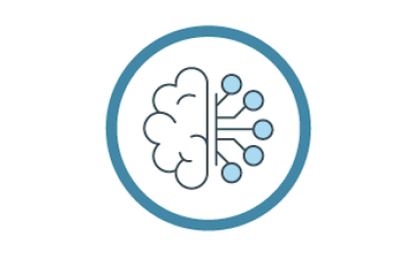
AI Applications and Prompt Engineering
Learn to create AI applications with prompt engineering in this introductory online course. Go beyond AI basics, and learn technical and practical skills to harness the power of this emerging technology. Some experience with JavaScript, Node.js, and APIs is recommended.
-
Course by

-
 30
30
-
 English
English
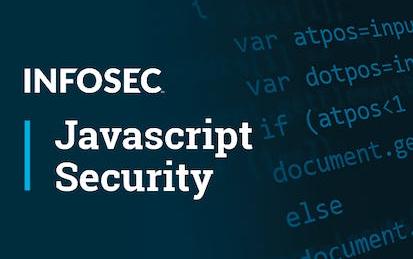
JavaScript Security
In this Specialization, we will investigate, prevent, and resolve JavaScript-related attacks and learn how to build safer JavaScript applications. JavaScript is a fundamental technology for building web applications and is also popular for building server-side, desktop, and even mobile applications. Most of this learning Specialization will cover front-end JavaScript; however, we will also consider Node.js. After completing this Specialization, you will understand the diverse threats and protections of the JavaScript world.
-
Course by

-
 Self Paced
Self Paced
-
 English
English
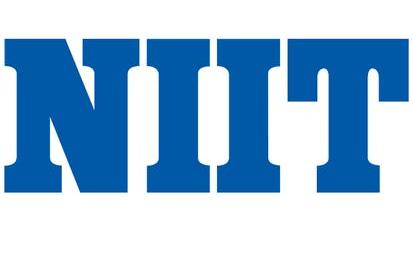
RESTful Microservices Using Node.js and Express
Backend refers to the server side of development. Here, the primary focus is on how a website works. Node.js is considered efficient for the development of backend applications as it brings event-driven programming and enables development of fast and efficient web servers in JavaScript. Developers can create scalable servers by using a simplified model of event-driven programming that uses call-backs to signal completion of a task.
-
Course by

-
 Self Paced
Self Paced
-
 English
English

AWS Elastic Beanstalk: Build & Deploy a Node.js RESTful API
In this 1-hour long project-based course, you will learn how to create a Node.
-
Course by

-
 Self Paced
Self Paced
-
 3 hours
3 hours
-
 English
English

App Deployment, Debugging, and Performance en Français
Dans ce cours, les développeurs d'applications apprennent à concevoir et à développer des applications cloud natives qui s'intègrent parfaitement aux composants de l'écosystème Google Cloud. À travers un ensemble de présentations, de démonstrations et d'ateliers pratiques, les participants découvrent comment créer des déploiements reproductibles en traitant l'infrastructure comme du code, en choisissant l'environnement d'exécution approprié pour une application et en surveillant les performances applicatives. Il est obligatoire de terminer une version de chaque atelier.
-
Course by

-
 Self Paced
Self Paced
-
 English
English

IBM Full Stack Software Developer
Prepare for a career in the high-growth field of software development. In this program, you’ll learn in-demand skills and tools for front-end, back-end, and cloud native application development to get job-ready in less than 4 months. Full stack refers to the end-to-end computer system application, including the front end and back end coding. Cloud native development refers to developing a program designed to work on cloud architecture. The flexibility and adaptability that full stack and cloud native developers provide make them highly sought after in this digital world.
-
Course by

-
 Self Paced
Self Paced
-
 English
English
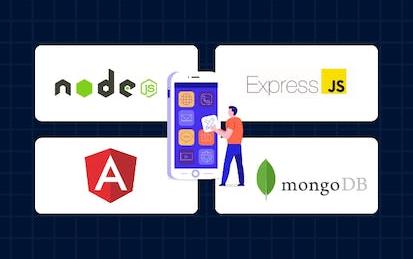
Learning MEAN Stack by Building Real world Application
The MEAN Stack Web Development Specialization prepares you to build fast, scalable, full-stack applications using MongoDB, Express, Angular, and Node.js. Through three hands-on courses, you’ll master Angular for responsive front-end development, build secure RESTful APIs with Node.js and Express, and integrate front-end and back-end to create complete MEAN applications.
-
Course by

-
 Self Paced
Self Paced
-
 English
English

Running a Node.js Container on Google Kubernetes Engine
This is a self-paced lab that takes place in the Google Cloud console. Containers are becoming a popular way to run and scale applications across multiple cloud providers or on both cloud and on premise hardware. This lab provides a quick introduction to running a website on Google Container Engine using Docker.
-
Course by

-
 Self Paced
Self Paced
-
 1 hour
1 hour
-
 English
English

Capstone Project Using Node.js
The Capstone Project gives you an opportunity to revisit the concepts covered and develop a workable solution for the given problem statement using the best practices. The solution needs to be developed in accordance with the industry standards within the stipulated time and must be based on the guidelines provided.
-
Course by

-
 Self Paced
Self Paced
-
 25 hours
25 hours
-
 English
English

Diseñando páginas web con Bootstrap 4
Este curso te enseñará conceptos generales de desarrollo web del lado cliente, metodologías de trabajo y herramientas. Aprenderás sobre diseño responsive, grillas, y componentes CSS y Javascript de Bootstrap. Practicarás con preprocesadores de CSS, Less y Sass. También aplicarás conceptos básicos de Node.js y NPM para gestionar tus sitios web. Al finalizar este curso, habrás practicado con todas esas herramientas y serás capaz de diseñar una página web e implementar ese diseño con Bootstrap, crear un diseño responsive y preparar tu sitio web para salir a producción.
-
Course by

-
 Self Paced
Self Paced
-
 Spanish
Spanish

Introduction to Node.js
Get started with Node.js, the most popular open source JavaScript runtime. Discover the ways in which Node.js helps in everyday computing scenarios, from service-mocking, rapid-prototyping and real-time applications, to Command Line Interfaces (CLI).
-
Course by

-
 50
50
-
 English
English




